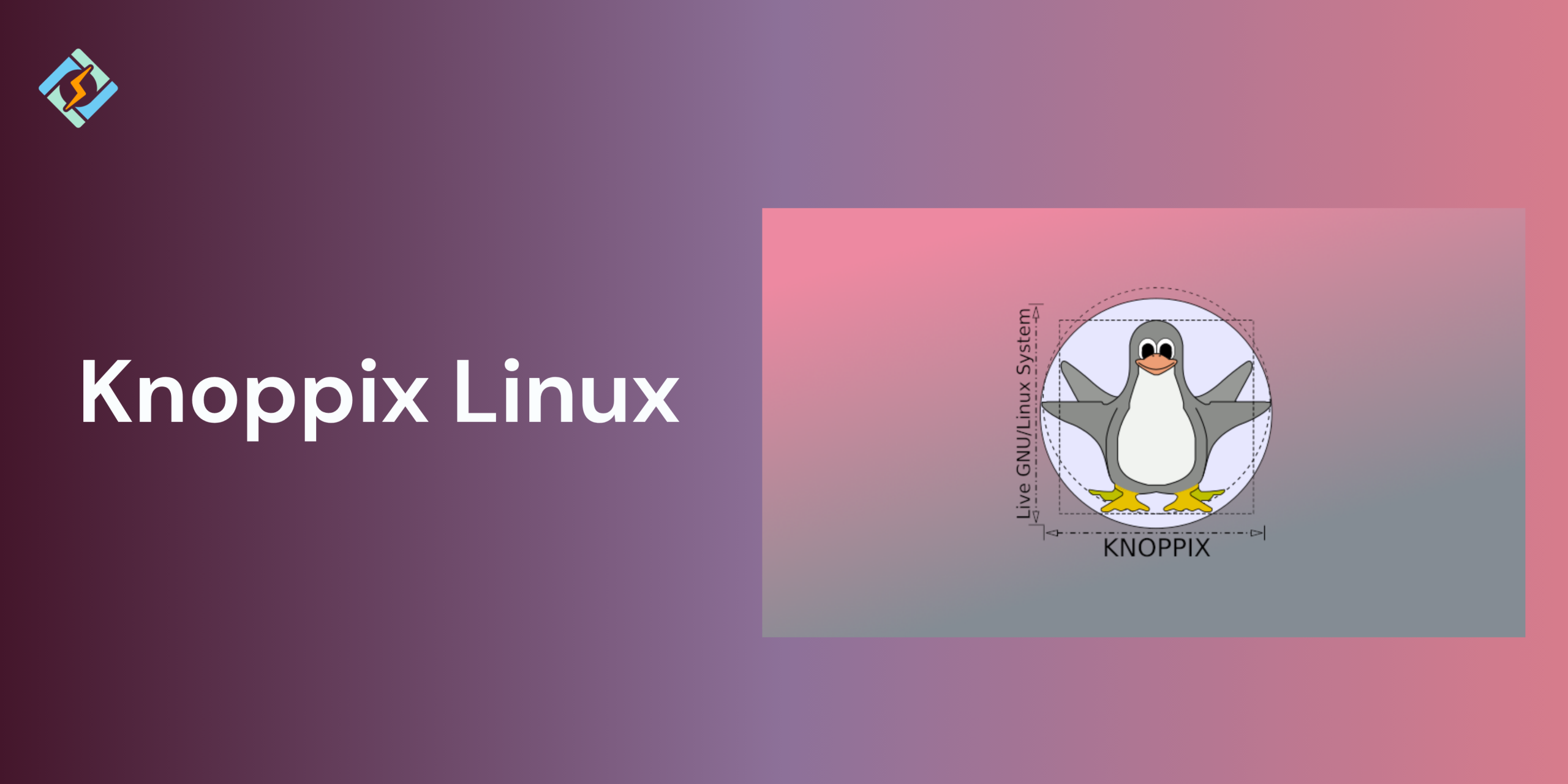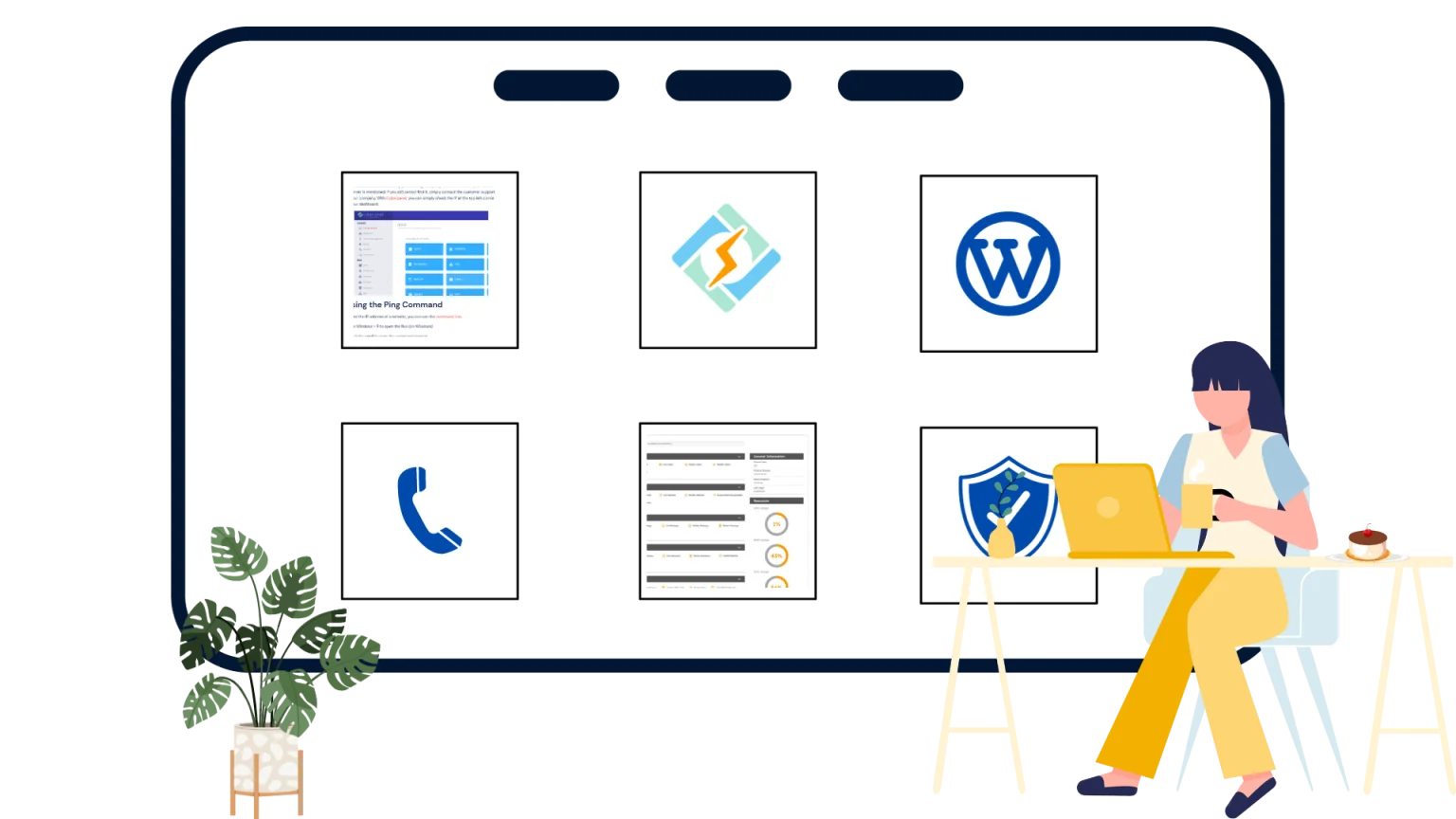Knoppix Linux is one of the most iconic and reliable distributions from the platform, particularly known for its ability to run directly from the USB drive or DVD without installation. Originally from Klaus Knopper, Knoppix was among the first distros to showcase the power of a fully functional operating system that can be booted and run from a removable media.
So whether you are a system administrator, tech enthusiast, or someone looking for a rescue toolkit, Knoppix offers the best solution!
In this guide, we shall walk through everything that you need to know about Knoppix Linux, from the downloading guide to a troubleshooting toolkit.
What Makes Knoppix Unique?
Knoppix is the pioneer of running a full-featured Linux distribution directly from the removable media. Some of the key features include:
- Knoppix does not require any installation whatsoever, you can use it on any compatible machine without touching the hard drive.
- Knoppix excels at detecting and configuring the hardware, including graphics cards, networking devices, and storage, making it an ideal solution for older or unknown systems.
- Knoppix uses on the fly decompression (Cloop), which allows it to include more software than other traditional live distros while maintaining performance.
- It has built-in tools for recovery, networking, and productivity.
System Requirements and Compatibility
Knoppix is quite lightweight and can run on almost all machines, given that the system follows these requirements:
- CPU: Intel/AMD i486 or better
- RAM:
- Minimum: 512 MB (with swap enabled)
- Recommended: 2 GB or more for smooth operation
- Boot Media: USB stick (recommended), CD/DVD drive
- Storage: Not required unless using persistent storage or installing
- Graphics: Most standard graphic cards are supported automatically
Knoppix is compatible with both legacy BIOS and UEFI systems, though some configurations might require additional boot parameters.
Get exclusive access to all things tech-savvy, and be the first to receive
the latest updates directly in your inbox.
Related Article: BlackArch Linux: Download and Installation as an Advanced Pen-testing Powerhouse
How to Download Knoppix ISO
To download Knoppix Linux ISO, you would need to:
- Visit the official website.
- Choose between the CD edition (lightweight) or the DVD edition (full software suite).
- Select either the mirror or the torrent link to download the ISO file.
- Verify the checksum to ensure that you have the right file.
Creating a Bootable Knoppix USB Drive
Once you have the ISO, you can work on creating a bootable USB drive using tools like:
For Linux:
dd command:
sudo dd if=knoppix.iso of=/dev/sdX bs=4M status=progress && sync
- Replace /dev/sdX with your USB device. Be careful—this will overwrite the selected device.
- Etcher (GUI): Cross-platform tool with a simple interface.
For Windows:
- Rufus:
- Select the Knoppix ISO and your USB drive.
- Download and open Rufus.
- Use default settings or select “DD Image” mode if required.
- Click “Start” to create the bootable USB.
Once done, insert the USB into your preferred machine, reboot, and select the USB from the boot menu.
Booting Knoppix: Live Mode, Cheat Codes & Options
Another one of Knoppix Linux’s defining features is the fact that it can run directly from a CD, DVD, or a USB drive without installing anything on your hard drive. This is generally known as Live Mode, and it makes Knoppix the perfect platform for testing, troubleshooting, and emergency repair tasks.
When booting into Knoppix, you will come across a boot menu with multiple cheat codes, which are boot parameters that allow you to customize the behavior of the operating system. These include the options to:
- Start in text mode (knoppix 2)
- Disable sound or specific hardware drivers
- Specify keyboard layout (knoppix lang=en)
- Use persistent storage from a USB or disk
- Enable special accessibility features
Cheat codes make it easy to tailor Knoppix for performance, compatibility, or troubleshooting needs, especially on older or unusual hardware.

Exploring the Knoppix Desktop Environment
Knoppix Linux uses the LXDE desktop environment, although some versions include KDE and GNOME as well. The interface is lightweight yet user-friendly, with a taskbar, application menu, file manager, and a system tray for easy navigation.
Even though Knoppix runs from a live medium, it includes many essential desktop features such as:
- A terminal emulator
- Web browser (typically Chromium or Firefox)
- File archiver
- PDF viewer
- Media player
The desktop version is mostly responsive on older machines, thanks to the system’s lean resource usage.
Top Tools and Software Included in Knoppix
Knoppix Linux comes with a wide range of software, making it a versatile platform from the get go. Some of the most common tools include:
- GParted – For partition management and disk formatting
- TestDisk & PhotoRec – Data recovery tools for recovering deleted files and partitions
- ClamAV – An open-source antivirus scanner
- K3b – A disc burning utility
- LibreOffice Suite – For word processing, spreadsheets, and presentations
- Midnight Commander – A powerful terminal-based file manager
- Synaptic Package Manager – For installing or removing additional software
These tools make Knoppix Linux an ideal system for recovery, diagnostics, and even normal day computing.
Use Cases: Rescue, Recovery, and Portable Computing
Knoppix Linux excels in multiple real-world use cases:
- System Recovery: if your main OS fails to boot properly, you can use Knoppix Linux to access the files or scan viruses.
- Data Recovery: With utilities like TestDisk and ddrescue, Knoppix would be able to recover lost partitions and files from failing hard drives.
- Portable Desktop Environment: Because Knoppix Linux runs from a USB stick and does not require installation, it is great for carrying a secure, personalized Linux environment that is used on almost all PCs.
- Network Troubleshooting: Knoppix Linux has diagnostic tools like nmap, wireshark, and netcat, making it ideal for IT professionals.
- Educational Tv l: Lightweight and easy to explore Knoppix is often used to teach Linux basics without modifying the user’s existing system.
Limitations of Knoppix Linux
While Knoppix is incredibly useful as a live Linux distribution, it comes with certain limitations:
- Knoppix Linux is not an ideal solution for daily use, since it is not designed to be a full-time desktop OS. Updates and package management are not as seamless as in other distros.
- Since Knoppix is a primary rescue time, it is not always present in the latest version.
- Knoppix might not have drivers for the latest hardware due to infrequent release schedules.
- The official language for the platform is German, so it might be hard to fully understand the documentation.
Linux Knoppix vs Other Live Linux Distros
| Feature / Distro | Knoppix | Puppy Linux | Slax | Tails |
| Primary Use | System rescue, troubleshooting, portability | Lightweight desktop for older PCs | Minimalistic, modular desktop OS | Privacy-focused, anonymous browsing |
| Persistence | Manual setup required | Built-in persistence on USB | Optional module-based persistence | Optional encrypted persistence |
| Size | ~4GB+ full ISO | ~300MB | ~300MB | ~1.3GB |
| Default Desktop | LXDE / KDE | JWM / Openbox | Fluxbox | GNOME |
| Security Focus | Moderate | Low | Low | High (uses Tor, amnesic by design) |
| Best For | IT pros, sysadmins, educators | Reviving old hardware | Quick boot and basic tasks | Journalists, activists, privacy advocates |
Conclusion
Knoppix Linux is a powerful, no installation Linux distribution that is a perfect solution for system recovery, diagnostics, and portable computing. Whether you’re rescuing a crashed system, recovering lost data, or simply exploring Linux, Knoppix remains one of the most respected and reliable live distros available.
FAQs
How do I create a bootable Knoppix USB drive?
You can use tools like Rufus (Windows), Etcher (cross-platform), or the dd command (Linux/macOS) to create a bootable Knoppix USB from its ISO file.
What are Knoppix cheat codes?
Cheat codes are boot-time parameters that customize how Knoppix loads—for example, to enable specific hardware support or run in safe graphics mode.
Is Knoppix still maintained?
Yes, Knoppix continues to receive updates. The latest versions include modern kernel support and updated software packages.



